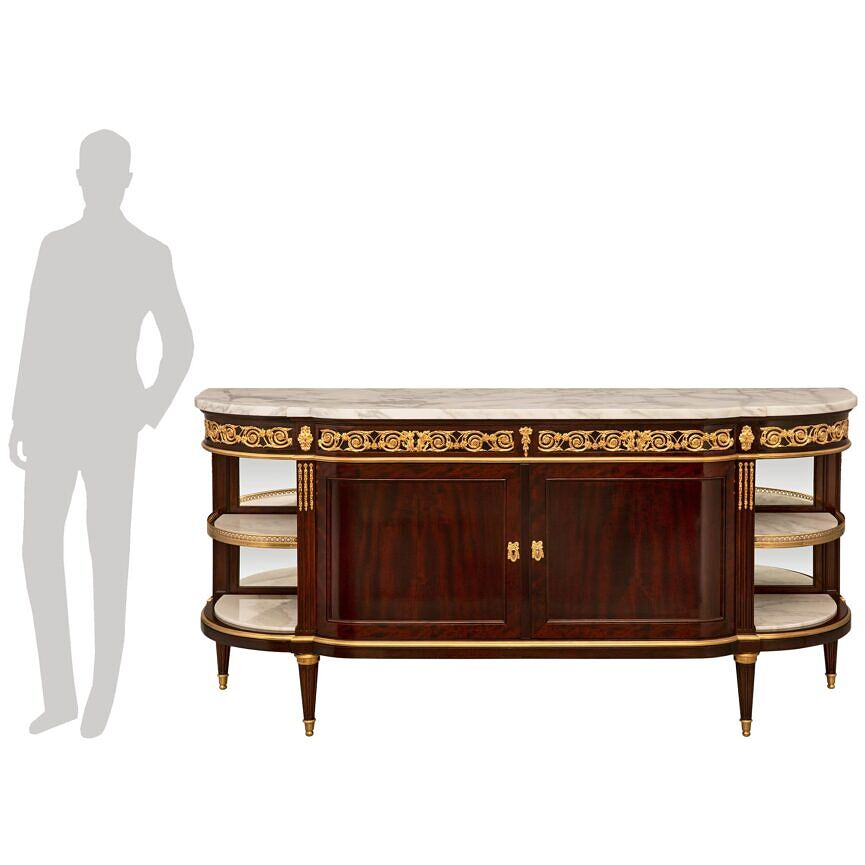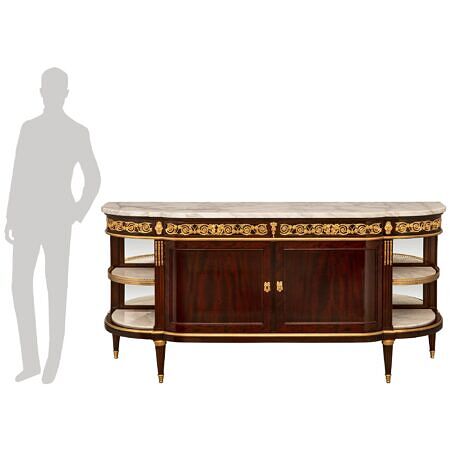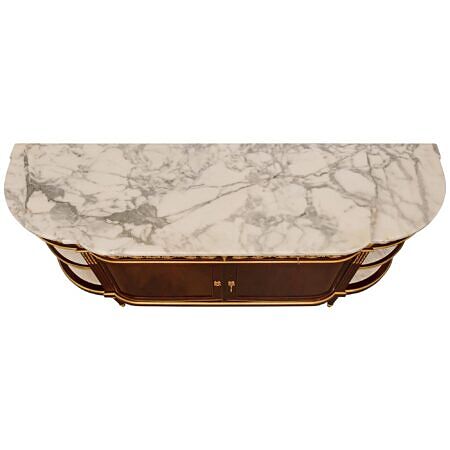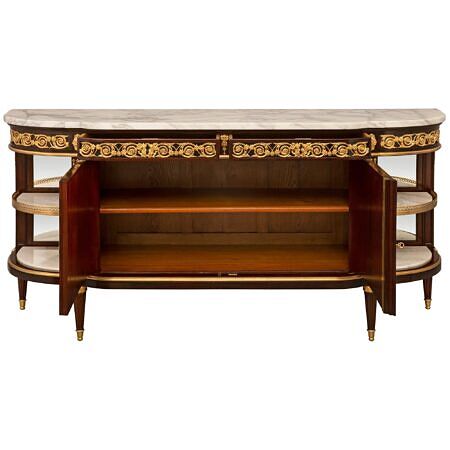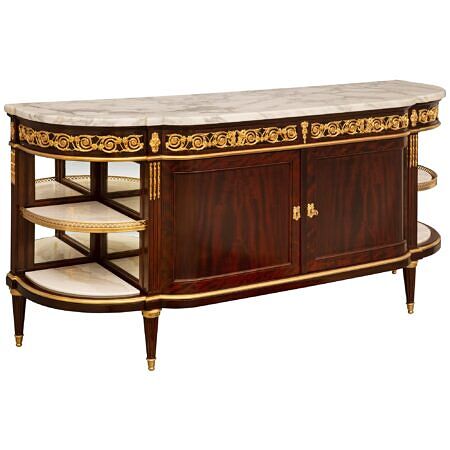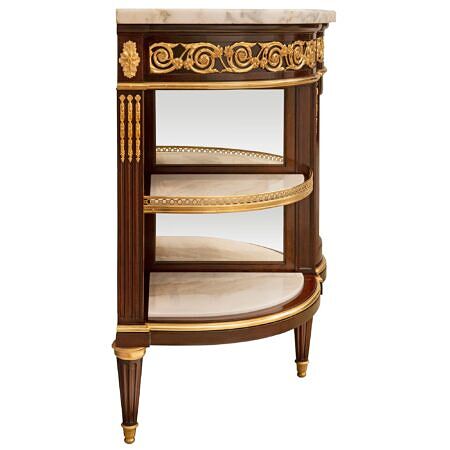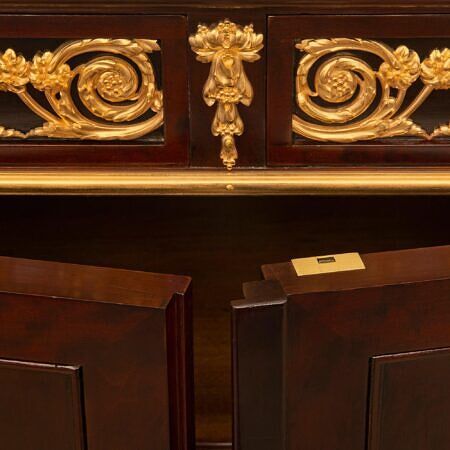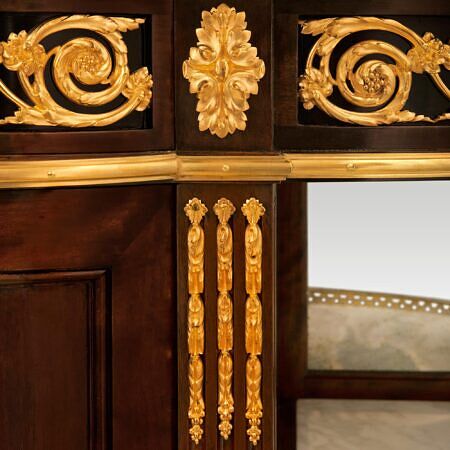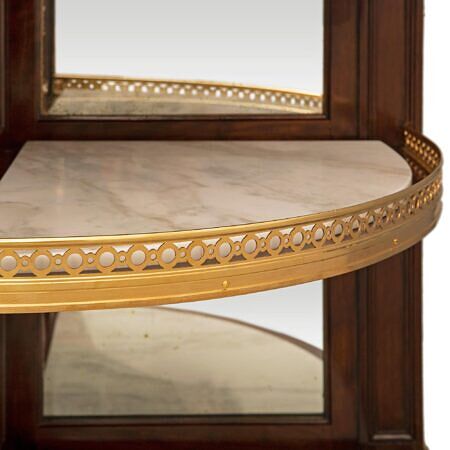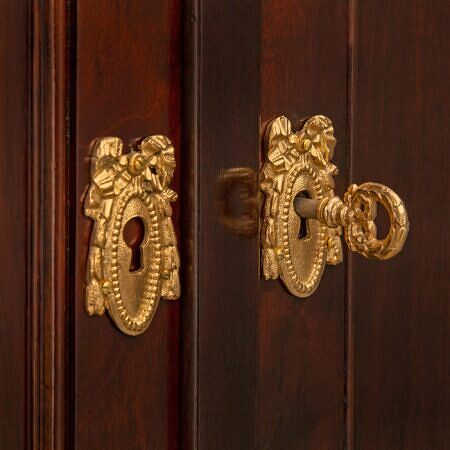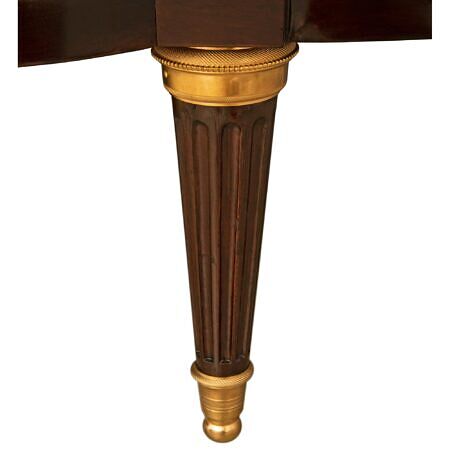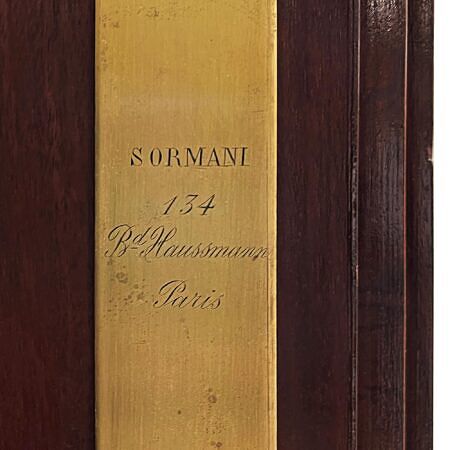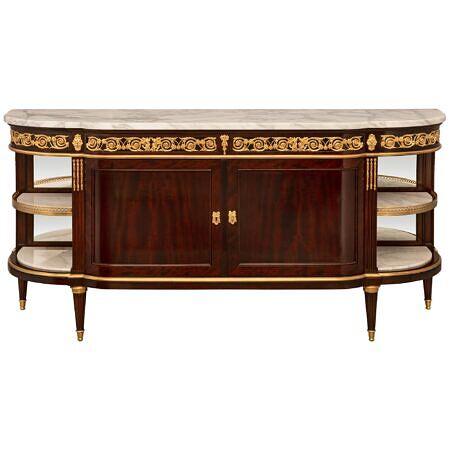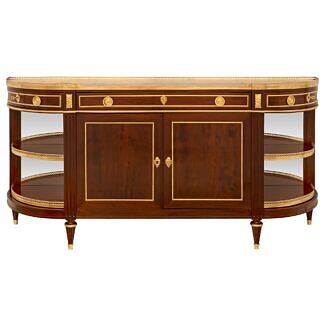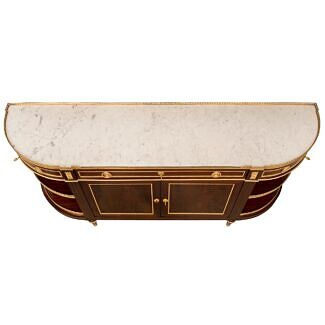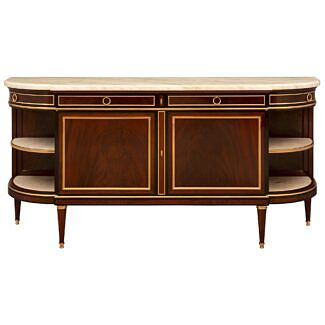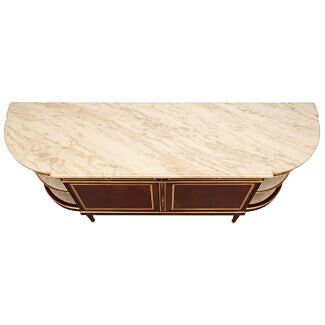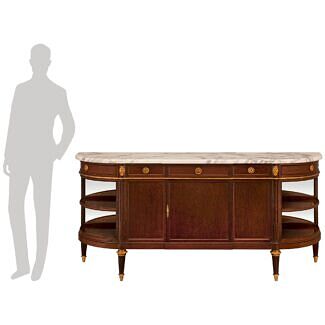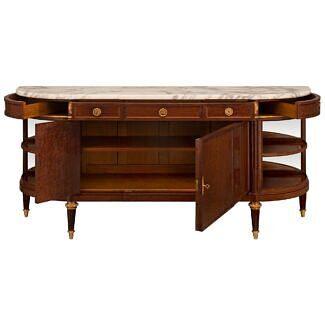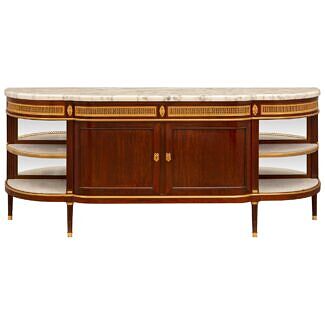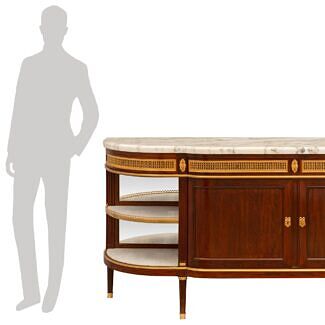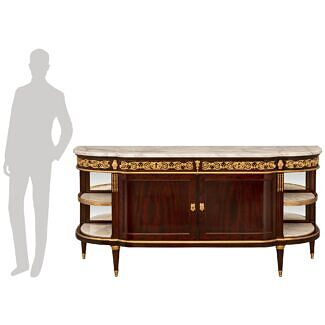A French 19th century Louis XVI st. Belle Époque period Mahogany, ormolu and Arabescato marble buffet signed by Paul Sormani
An exceptional and very high quality French 19th century Louis XVI st. Belle Époque period Mahogany, ormolu and Arabescato marble buffet signed by Paul Sormani. The two door four drawer buffet is raised by elegant circular tapered fluted legs with... — Read More
An exceptional and very high quality French 19th century Louis XVI st. Belle Époque period Mahogany, ormolu and Arabescato marble buffet signed by Paul Sormani. The two door four drawer buffet is raised by elegant circular tapered fluted legs with fine fitted mottled ormolu sabots and top ormolu caps. At the center are two doors each displaying recessed panels showcasing the beautiful Mahogany grain framed within a delicate mottled border and displaying lovely tied ribbon and berried laurel ormolu keyhole escutcheons. The doors open to reveal one adjustable shelf and all original handsome hardware. Flanking the doors are striking fluted columns with fine ormolu chandelles and two open quarter rounded shelves at each side with their fitted white and grey veined marble tops. At the back are the original mirrored plates and an elegant front pierced ormolu gallery. Above are the two central drawers and two outer quarter round drawers. The drawers each display striking intricately detailed pierced ormolu mounts with beautiful richly chased scrolled floral designs set in recessed panels. Above lays its original and thick marble top with a fine mottled border. Exceptional quality throughout.
Paul Sormani (1817-1877) One of the most renowned 19th century French cabinet makers and Bronzier of the highest quality. Sormani participated in major international exhibitions of 1855, 1862 and 1867. Awarded a bronze medal in 1849 and a first-class medal in 1855. At the Universal Exhibition of 1867, his work has been described as “A quality of workmanship of the highest order". — Read Less
- Item # 13048
-
H: 39.25 in L: 82.75 in D: 23 in
H: 100 cm L: 210 cm D: 58 cm
- France
- 19th Century
- Mahogany, Marble/Stone, Ormolu
-
Belle Époque Period Read More,
Louis XVI st. Read More
(Belle Époque Period) -
Gaining its name from the optimistic and peaceful period of time between 1871 and World War I, Belle Epoque means “beautiful period”, and occurred during the era of the Third French Republic. This period of economic, colonial, and scientific prosperity brought with it a flourishing artistic climate with numerous literal, musical, theatrical, and visual masterpieces being created.
The Eiffel Tower, which was constructed between 1887 and 1889, served as the entrance to the World’s Fair held in Paris. That same year, the Moulin Rouge cabaret in Paris was founded and showcased the now more mainstream styles of performance including can-can dancing. Belle Epoque dancers and singers were Paris celebrities and became immortalized by the poster arts of Toulouse-Lautrec.
Leading up to this period in 1865, the American Civil War was coming to a close, with France proposing to construct the Statue of Liberty as a joint effort with the United States. France would be responsible for the statue, with America constructing the pedestal. Created to celebrate the nation’s success in building a viable democracy, the statue would stand as a symbol of friendship between the French and American people.
(Louis XVI st.) -
Also known as Louis Seize, Louis XVI's style is a style of architecture, furniture, decoration, and art created during Louis XVI’s 19-year reign in France, just before the French Revolution.
Thought to be a reaction and juxtaposition to the prior more elaborate styles, Louis XVI style developed at the end of the Baroque Period and continued until the birth of French Neoclassicism.
King Louis XVI showed little enthusiasm for the old world styles of the Baroque Period and he sought out a create a new “beau ideal” that focused on the purity and grandeur of Ancient Romans and Greeks.
Inspired by Ancient Roman architecture and art, distinct features of the Louis XVI style are linear lines, small repeated motifs, floral medallions hanging from ribbons, acanthus leaves, urns, dolphins, ram, and lion heads, and griffins.
Greco-Roman elements, often used in earlier and later French styles, were also quick common and included fluted and twisted columns, Caryathids, and corbels.
- Paul Sormani Read More
Paul Sormani (1817-1877) One of the most renowned 19th century French cabinet maker and Bronzier of the highest quality. Paul Sormani established his firm in 1847 at 7 Cimetiere Saint-Nicolas in Paris. Sormani participated in major international exhibitions of 1855, 1862 and 1867. Awarded a bronze medal in 1849 and a first-class medal in 1855. At the Universal Exhibition of 1867, his work has been described as “A quality of workmanship of the highest order".
Payment Plan Option Learn More Choose the payment plan option at checkout and customize this payment option with our team. Payment plans are flexible and items will ship once all payments are received.


